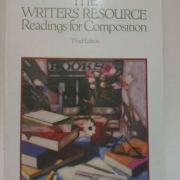A Taste of Wine and Content Cues
This week’s Say It For You blog posts are inspired by items in issues of Wine Spectator which I think offer clues to the most attention-grabbing and impactful ways of marketing a product or service through content……(Today’s quotes come from the March 2024 issue of the magazine).
Using unlikely comparisons
Looking for an acoustic guitar, Bruce Sanderson writes, “It occurred to me that tone woods are to an acoustic guitar what grape varieties are to wine.”
Turns of phrase catch readers by the curiosity,” I realized years ago. Putting ingredients together that don’t seem to match is not only an excellent tool for creating engaging marketing content, but also a good teaching tool. Going from what is familiar to readers to the unfamiliar area of your own expertise, allows your potential customers to feel smart as well as understood.
Introducing “insider” terminology
If you’re a wine lover, you’ll want to check the UGA on the label, pinpointing the region in Italy from which the grapes originated..The designation is brand-new, with 2024 vintage wines the first to be allowed to display the “credential”, Alison Napjus explains…
In marketing content, once you’ve established common ground, reinforcing to readers that they’ve come to the right place, it’s important to add lesser-known bits of information on your subject, which might take the form of arming readers with new terminology, serving several purposes:
- positioning the business owner or professional practitioner as an expert in the field
- adding value to the “visit” for the reader
- increasing readers’ sense of being part of an “in-the-know” grouphttps://www.sayitforyou.net/using-tidbits-of-information-in-blogs/allow-me-to-introduce-new-terminology
Using the power of story
“When I was embarking on my first trip to Europe as a young trumpeter, the great saxophone player Ben Webster pulled me aside and gave me some of the best advice a 19-year old who had never traveled outside of the country could ever receive: “Wherever you go, eat the food the real people eat.”
In creating content for business, I recommend including anecdotes about customers, employees, or friends who accomplished things against all odds. That shifts the focus to the people side of things, I explain to clients, highlighting the relationship-basedaspects of your practice, plant, or shop.
Educating prospects and customers
“In 2019 the Guigals opened their wine museum in Ampuis, which introduces visitors to the history of vineyards and winemaking in the Rhone dating back to Roman Times.”
Content writers need to include information that can continue to have relevance even months and years later, material that is evergreen and which adds to readers’ knowledge of the subject.,
While becoming a wine connoisseur may be furthest from your mind, these “sips” from Wine Spectator can offer valuable insights for creators of marketing content.




Follow us online!